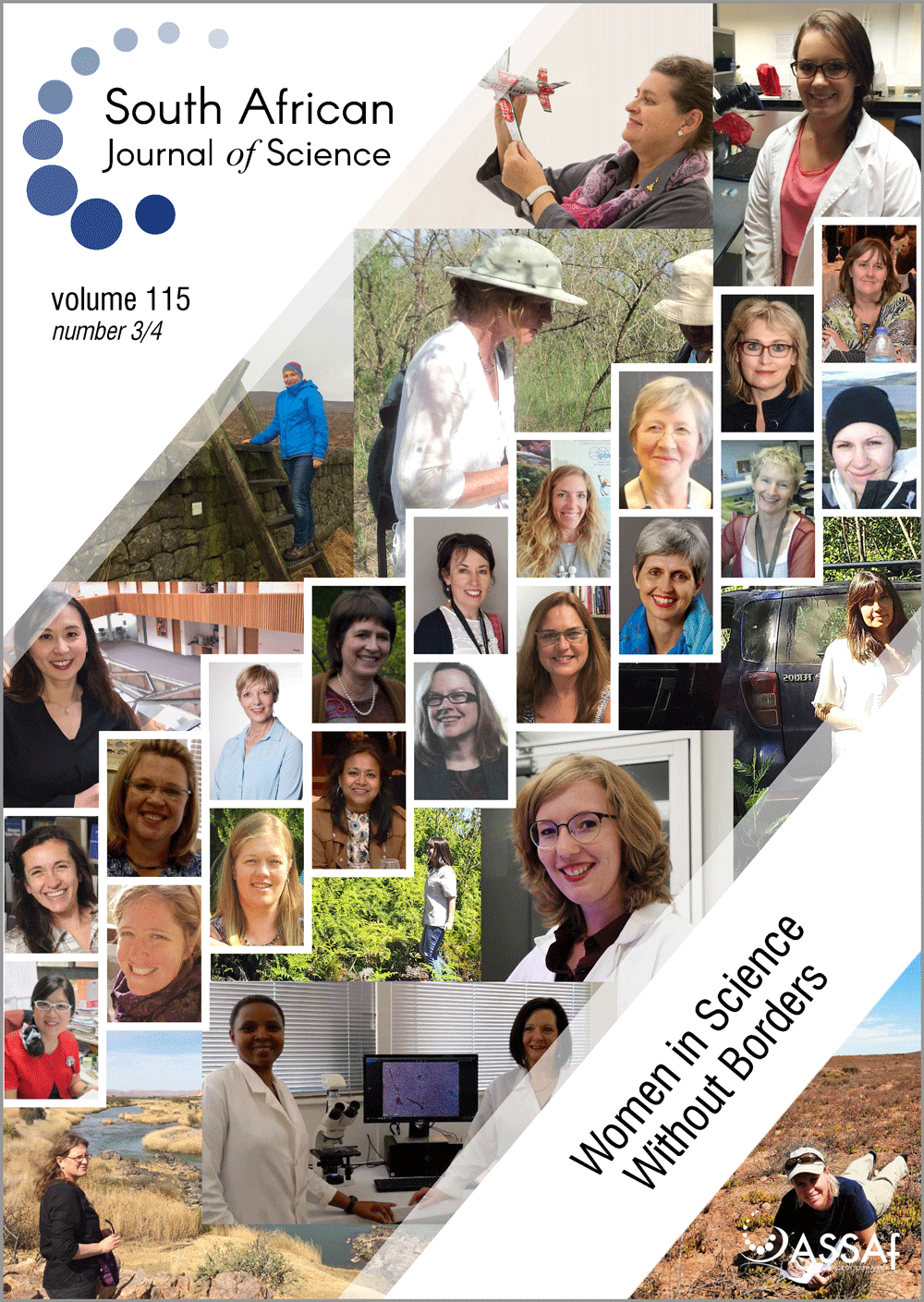Reclassification of early stage breast cancer into treatment groups by combining the use of immunohistochemistry and microarray analysis
DOI:
https://doi.org/10.17159/sajs.2019/5461Keywords:
oestrogen receptor, microarray, molecular subtype, BluePrint, MammaPrintAbstract
Immunohistochemistry (IHC) is routinely used to approximate breast cancer intrinsic subtypes, which were initially discovered by microarray analysis. However, IHC assessment of oestrogen receptor (ER), progesterone receptor (PR) and human epidermal growth factor receptor-2 (HER2) status, is a poor surrogate of molecular subtype. Therefore, MammaPrint/BluePrint (MP/BP) microarray gene expression profiling is increasingly used to stratify breast cancer patients into different treatment groups. In this study, ER/PR status, as reported by standard IHC and single-gene mRNA analysis using TargetPrint, was compared with molecular subtyping to evaluate the combined use of MP/BP in South African breast cancer patients. Pathological information of 74 ER/PR positive, HER2 negative tumours from 73 patients who underwent microarray testing, were extracted from a central breast cancer genomics database. The IHC level was standardised by multiplying the intensity score (0–3) by the reported proportion of positively stained nuclei, giving a score of 0–300. Comparison between mRNA levels and IHC determination of ER/PR status demonstrated a significant correlation (p<0.001) for both receptors (ER: 0.34 and PR: 0.54). Concordance was shown in 61 (82%) cases and discordance in 13 (18%) of the 74 tumours tested. Further stratification by MP/BP identified 49 (66.2%) Luminal A, 21 (28.4%) Luminal B and 4 (5.4%) Basal-like tumours. Neither IHC nor TargetPrint could substitute BP subtyping, which measures the functional integrity of ER and can identify patients with false-positive tumours who are resistant to hormone therapy. These findings support the implementation of a pathology-supported genetic testing approach combining IHC and microarray gene profiling for definitive prognostic and predictive treatment decision-making in patients with early stage breast cancer.
Significance:
- Single-gene genomic oestrogen and progesterone receptor reporting adds limited additional information to the molecular stratification of breast cancer tumours and does not supersede the immunohistochemistry results.
- Neither single-gene genomic mRNA nor immunohistochemistry reporting of oestrogen and progesterone receptor status can replace the combined use of MammaPrint/BluePrint genomic molecular subtyping.
- Reliable distinction between Luminal A and B type tumours is not possible using immunohistochemistry or single-gene genomic mRNA assessment of oestrogen/progesterone and HER2 receptor status.
- Combining immunohistochemistry and microarray gene profiling enables the identification of endocrine treatment resistant hormone-positive tumours lacking ERα function (Basal-like), despite positive expression at the protein and single-gene RNA level.
Published
Issue
Section
License

All articles are published under a Creative Commons Attribution 4.0 International Licence
Copyright is retained by the authors. Readers are welcome to reproduce, share and adapt the content without permission provided the source is attributed.
Disclaimer: The publisher and editors accept no responsibility for statements made by the authors
How to Cite
- Abstract 1316
- PDF 754
- EPUB 255
- XML 439












.png)